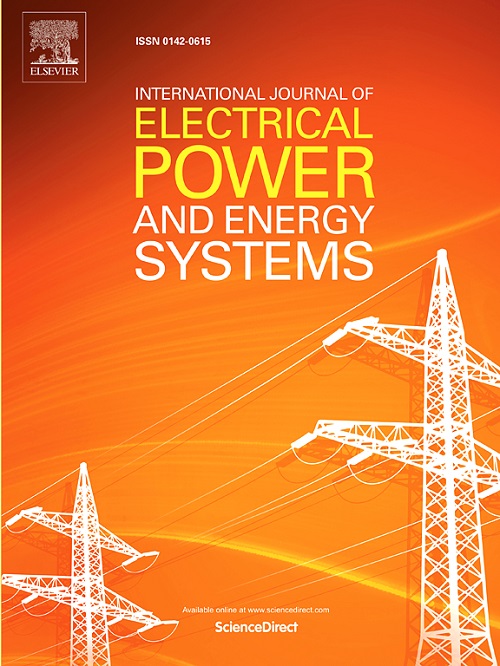Contribution analysis of neutral current for the substations invaded by stray current from multiple metro lines
IF 5
2区 工程技术
Q1 ENGINEERING, ELECTRICAL & ELECTRONIC
International Journal of Electrical Power & Energy Systems
Pub Date : 2025-05-19
DOI:10.1016/j.ijepes.2025.110773
引用次数: 0
Abstract
As a type of convenient and environmentally friendly transportation tool, urban rail transit has been constructed as vital infrastructure in numerous cities over the world. Currently, direct current (DC) traction power supply mode has been applied as mainstream for most of metro lines. However, along with long-term service, the insulation performance between steel track and concrete sleeper deteriorates gradually, possibly causing traction current leaking from rail to ground, forming as ‘stray current’. It possibly invades into transformers through their grounding poles, causing local thermal surge, abnormal vibration or even power quality degradation. At present, only relying on the passively protecting method via installing fixed impedance at the grounding pole can hardly cope with the transiently-varying stray current. Tracing the origin of stray current especially under the scenario of multiple metro lines becomes essential, as the periodicity of traction current from each metro line can be extracted as ‘fingerprint’. A boundary element model of a region with multiple metro lines is launched based on practical geological data, for evaluating the route and distribution of stray current. Based on the Wavelet Transform (WT) method, the correlation is found precisely via comparing periodic feature between the traction current of different metro lines and the neutral current measured synchronously at substations. Moreover, an origin tracing method for clarifying the contributions made by different metro lines on the substation’s neutral current is proposed via analyzing the local periodicity of traction current and neutral current, for laying the solid foundation of precise suppression from origin.
多路地铁杂散电流侵入变电站中性电流贡献分析
城市轨道交通作为一种便捷、环保的交通工具,已被世界上许多城市建设为重要的基础设施。目前,大多数地铁线路以直流牵引供电方式为主流。然而,随着长期使用,钢轨与混凝土轨枕之间的绝缘性能逐渐恶化,可能造成牵引电流从轨道向地面泄漏,形成“杂散电流”。它可能通过变压器的接地极侵入变压器,造成局部热浪涌、异常振动甚至电能质量下降。目前,仅依靠在接地极安装固定阻抗的被动保护方法很难应对瞬变的杂散电流。由于每条地铁线路的牵引电流的周期性可以作为“指纹”提取出来,因此跟踪杂散电流的来源,特别是在多条地铁线路的情况下变得至关重要。以实际地质资料为基础,建立了多线路区域的边界元模型,用于评价杂散电流的走向和分布。基于小波变换方法,通过比较不同地铁线路的牵引电流与变电站同步测量的中性电流的周期特征,精确地找到了相关关系。通过对牵引电流和中性电流局部周期性的分析,提出了一种原点溯源方法,明确了不同地铁线路对变电站中性电流的贡献,为从原点进行精确抑制奠定了坚实的基础。
本文章由计算机程序翻译,如有差异,请以英文原文为准。
求助全文
约1分钟内获得全文
求助全文
来源期刊
CiteScore
12.10
自引率
17.30%
发文量
1022
审稿时长
51 days
期刊介绍:
The journal covers theoretical developments in electrical power and energy systems and their applications. The coverage embraces: generation and network planning; reliability; long and short term operation; expert systems; neural networks; object oriented systems; system control centres; database and information systems; stock and parameter estimation; system security and adequacy; network theory, modelling and computation; small and large system dynamics; dynamic model identification; on-line control including load and switching control; protection; distribution systems; energy economics; impact of non-conventional systems; and man-machine interfaces.
As well as original research papers, the journal publishes short contributions, book reviews and conference reports. All papers are peer-reviewed by at least two referees.

 求助内容:
求助内容: 应助结果提醒方式:
应助结果提醒方式:


